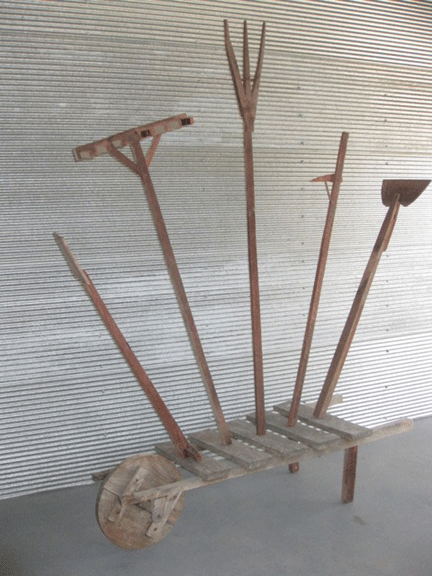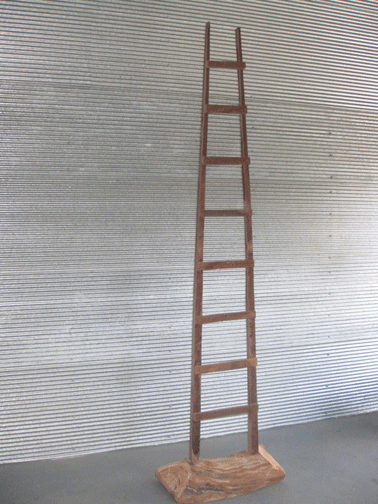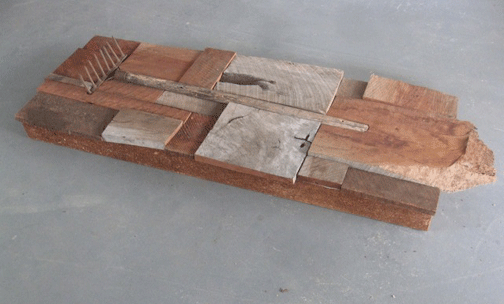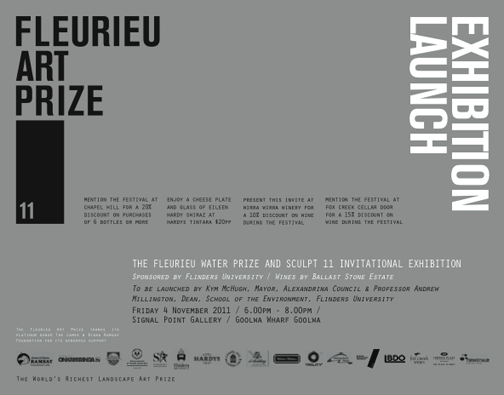|

Trojan pony
December, 2011
Sculpture survey exhibitions are a rare treat in South Australia
writes John Neylon.
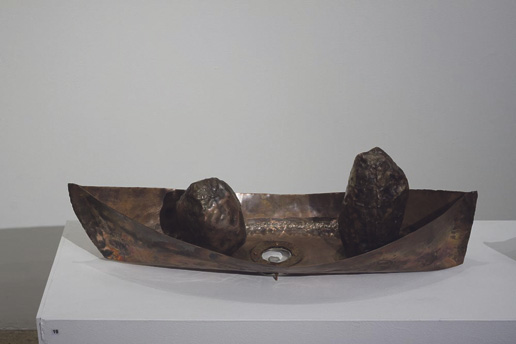
Painting's stranglehold on the Fleurieu
Art Prize program has been loosened a little by Sculpt11, an
all-sculpture exhibition co-curated by Max Lyle and Silvio Apponyi.
And that's not a bad thing. While pictorialists continue to find
inventive ways of re-working landscape and still life traditions,
the range of experiences on offer to a viewing public is always
mediated through the "person looks at a picture" filter.
Lyle, in his catalogue essay, stresses this point of difference
when suggesting that the materiality of sculptures enhances the
visual excitement, leading to "unexpected, marvelous and
rewarding discoveries". More significantly, the presence
of sculpture within the Fleurieu Biennale mix takes interpretation
and representation into fresh territory.
Examples in Sculpt11 include Ron Rowe's timber assemblages which
reference rural labor within settler communities, Gavin Malone's
use of "indigenous" materials such as limestone and
various timbers to explore processes of accommodation between
human societies and the land and Deborah Sleeman's use of diverse
materials and open-ended forms to convey notions of transience
and permanence. John Wood searches for poetic equivalents to
the Hills landscape in which he lives, while Max Lyle fuses ancient
and contemporary elements to create a hybridity which speaks
of spiritual balance and journeys, and Greg Johns brings together
wave energy, landscape and ancestral forms to offer re-readings
of the Australian landscape.
Group or survey sculpture exhibition are a rare species in South
Australia, which is passing strange given the national pre-eminence
of Adelaide-based contemporary sculpture in the later 20th century
and the object or installation-embedded contemporary practice
of many artists who work from, or have close associations with,
South Australia. To this should be added the momentum and focus
on sculpture generated by the Heysen Sculpture Biennial and the
Palmer Project and sculptural work (plus solo shows) featuring
regularly in commercial and alternative art spaces programming.
I suspect this paucity of survey-type exhibitions has more to
do with living in a post-(art)medium world in which many contemporary
artists, who for the best of reasons, don't want to have
their work corralled as "painting", "sculpture",
"photography" and so on. In the realm of sculptural
practice this is particularly relevant as conceptually there
is a great (and necessary) divide between objects that get called
"sculpture" and other things which are better described
as installations or defined by action verbs such as "occupying"
a site or "defining" space.
It seems obvious from the curators' selection that this rare
opportunity to survey sculptural studio practice wasn't going
to be sidetracked by forays into theoretical and art-political
speculation about the meaning and future of sculpture in a post-medium
world. Otherwise one would have expected to see the inclusion
of more fugitive, site-referencing, installation or polemical
works by other Adelaide-based artists such as Roy Ananda, Akira
Akira, Jonathon Dady, Louise Haselton, Julie Henderson, Julia
Robinson and George Popperwell. So while accepting that this
Sculpt11 selection favors a certain kind of studio sculptural
practice defined largely by an emphasis on visually coherent,
self-contained form with an overlay of symbolic or expressive
properties, it does open the door for future curatorial interrogation
of trends in object-based practice. From this perspective Sculpt11
might turn out to be a bit of a "Trojan Pony", destabilizing
and even critiquing the pre-eminence of pictorialism within the
Fleurieu Art Prize. Right now this is a special opportunity
to recognise and compare the diverse talents of leading South
Australian sculptors as showcased in Sculpt11 and displayed to
advantage in the impressive Signal Point Gallery space.
Sculpt11 2011 Fleurieu Sculpture Invitational
Signal Point Gallery Goolwa Wharf (also presenting The Fleurieu
Water Prize)
Until December 5
|
